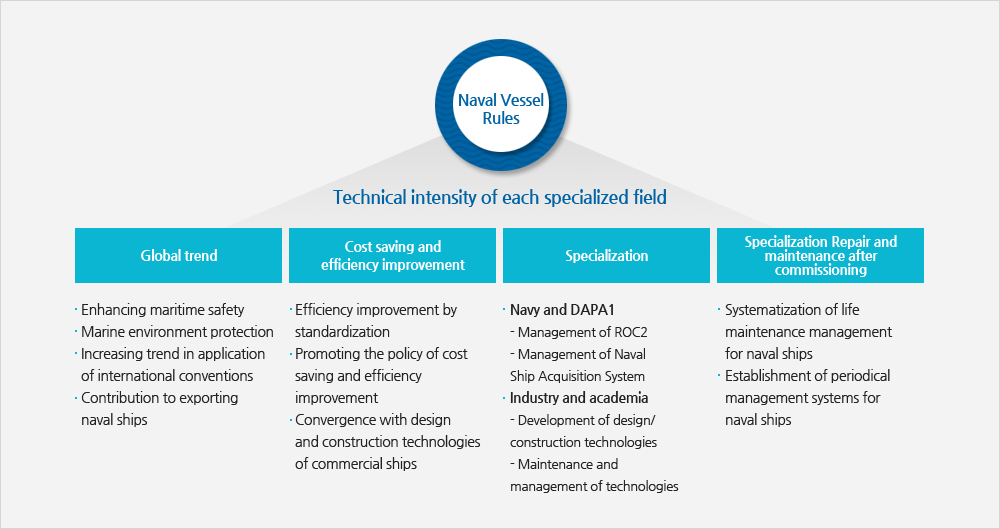Technology Standards Development
Based on KR’s future-oriented registration and maintenance management of naval vessels,
KR is ready to provide total solutions for clients, to establish a survey system in the life-cycle of naval vessels.

- Naval Vessel Rules
- Technical intensity of each specialized field
-
- Global trend
- Enhancing maritime safety
- Marine environment protection
- Increasing trend in application of international conventions
- Contribution to exporting naval ships
-
- Cost saving and efficiency improvement
- Efficiency improvement by standardization
- Promoting the policy of cost saving and efficiency improvement
- Convergence with design and construction technologies of commercial ships
-
- Specialization
- Navy and DAPA1
- - Management of ROC2
- - Management of Naval Ship Acquisition System
- Industry and academia
- - Development of design/construction technologies
- - Maintenance and management of technologies
-
- Specialization Repair and maintenance after commissioning
- Systematization of life maintenance management for naval ships
- Establishment of periodical management systems for naval ships
-
Development/possession status of naval surface vessel’s standards
- Naval Vessel Rule (Nine Parts, Result of “Dual Use Technology Development”)
- Standards for Design and Construction of Naval surface vessel
Development/possession status of submergible vessel’s standards
- Submarine Rules
- Submarine Standards for Design and Construction : 1st development step, 74 kinds (until 2015)
- Submarine Standards for Design and Construction : 2nd development step, 34 kinds (2015~2018)
- Survey by law of Submarine, Equipment survey instruction of submarine.
Development and maintenance procedure of naval vessel technology standards
KR continues to develop its comprehensive standards, considering safety, operability, construction techniques, performance and cost, through an ongoing process of in-depth formal review by the technology review committee. The committee is made up of experts from government, industry and academic institutions and other important organizations.

- Identification of the subjects
- Drafting and amendment
- Verification Committee
- Validation Committee → feed back → Drafting and amendment
- Interim standards
- Distribution
- Maintenance and management → feed back → Drafting and amendment



